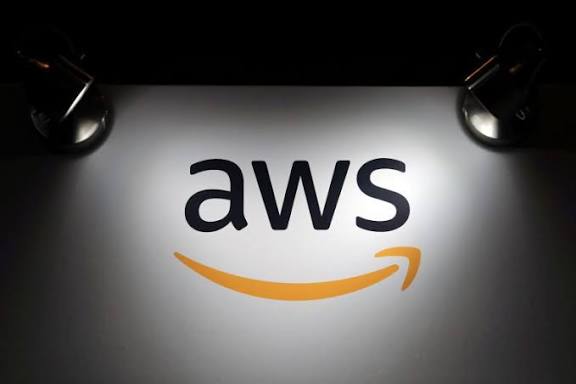NEW YORK (AP) — People worldwide were unable to connect to online services for business, social media, and video games on Monday due to internet outages associated with Amazon’s cloud computing service.
Three hours following the commencement of the outage, Amazon Web Services said that it was beginning to recover. However, the business later stated that it was still addressing “significant” faults and connectivity problems as they occurred across several services.
What is Amazon Web Services?
Many of the most popular internet services in the world are hosted by cloud computing firm Amazon Web Services. Many government agencies, academic institutions, and commercial enterprises rely on AWS for their backend cloud computing infrastructure.
The US-EAST-1 data center region, located in Virginia, is one of Amazon’s most significant cloud hubs globally, according to the Seattle-based company. Cybersecurity expert John Scott-Railton of Citizen Lab remarked on social media that the area is a backbone “for so many services that when things go screwy, domino effects around the internet-as-we-know-it are enormous.”
What transpired?
In two jargon-filled updates, AWS identified the “DynamoDB endpoint in the US-East-1 Region” as the cause of the issue.
According to cybersecurity expert Mike Chapple, “DynamoDB isn’t a term that most consumers know, but it underpins the apps and services that we all use every single day.”
According to Chapple’s email, “Many internet-based services use DynamoDB, a centralized database service, to track user information, store key data, and manage their operations.”
It is “one of the record-keepers of the modern internet,” according to Chapple, an IT professor at the Mendoza College of Business at the University of Notre Dame. It’s dependable, inexpensive, and quick. However, it ceased functioning today, and we witnessed the widespread impact of that outage on the internet.
According to Amazon’s modifications, the issue may not be with the database per se, but rather with the records that instruct other systems on where to locate their data, he added.
Apps were momentarily isolated from their data since Amazon had the data securely kept but no one else could access it for several hours. Chapple described it as though a significant section of the internet experienced momentary amnesia.
The outage was caused by a domain name system problem, according to Amazon. DNS is the service that links browsers and apps to webpages and underlying web services by converting internet addresses into machine-readable IP addresses. DNS mistakes break the connection by interfering with the translation process.
A DNS mistake can have far-reaching effects because so many websites and services utilize AWS.
Who was impacted?
Internet users worldwide experienced significant disruptions as a result of Amazon’s issue, which brought down dozens of significant online services, such as the communication app Signal, the video games Roblox and Fortnite, and the social networking platform Snapchat.
Customers reported problems with the McDonald’s app, Roblox, Fortnite, online broker Robinhood, Snapchat, and numerous other applications on DownDetector, a website that monitors internet outages.
In an email to The Associated Press, Starbucks Global Communications Director Jaci Anderson stated that while there was “a very limited impact for a very short amount of time” on the company’s app, all of its locations were operating regularly.
“To serve our customers this morning, our mobile order ahead and pay app is operating normally,” Anderson said in the middle of the morning.
According to DoorDash, some of its partners “experienced brief disruptions” that affected delivery, but its systems were unaffected.
The dangers of cloud services with centralization
For many years, several cybersecurity specialists have cautioned about the possibly unsavory repercussions of letting a small number of large computer firms control important internet functions.
According to Patrick Burgess, a cybersecurity specialist at BCS, The Chartered Institute for IT, based in the United Kingdom, “so much of the world now relies on these three or four big (cloud) compute companies that provide the underlying infrastructure that when there’s an issue like this, it can be really impactful across a broad range, a broad spectrum” of online services.
Because we spend so much time on our cellphones, Burgess claimed that “the world now runs on the cloud” and that the internet is viewed as a utility, much like electricity or water.
Additionally, because a few number of corporations control a large portion of the online plumbing, Burgess stated that when something goes wrong, “it’s very difficult for users to pinpoint what is happening because we don’t see Amazon, we just see Snapchat or Roblox.”
Burgess stated that there is no proof that the problem was brought on by a cyber incident, such as a cyberattack, and that “the good news is that this kind of issue is usually relatively fast (to resolve)”.
Has this ever occurred before?
This is not the first instance of extensive interruptions brought on by an issue with one of Amazon’s primary services.
Following a brief outage in 2023, some well-known internet services and publishers were unavailable. Companies ranging from car sales and airline reservations to payment apps and video streaming services had the largest outage in recent memory in late 2021, which lasted more than five hours. Significant outages also occurred in 2020 and 2017.
Unrelated to Amazon, in 2024, a cybersecurity business called CrowdStrike released a flawed software update that affected machines running Microsoft Windows. This upgrade caused significant disruptions all across the world.


